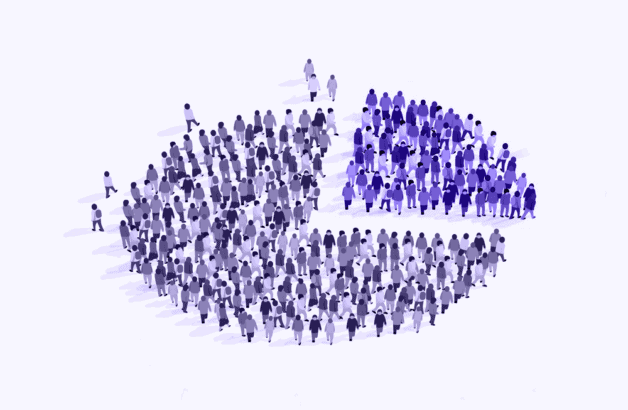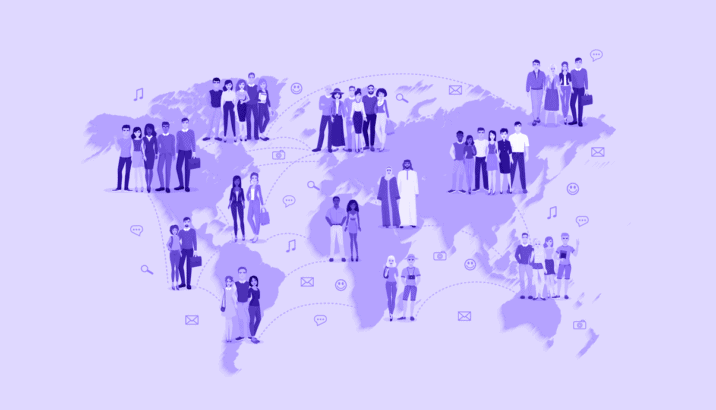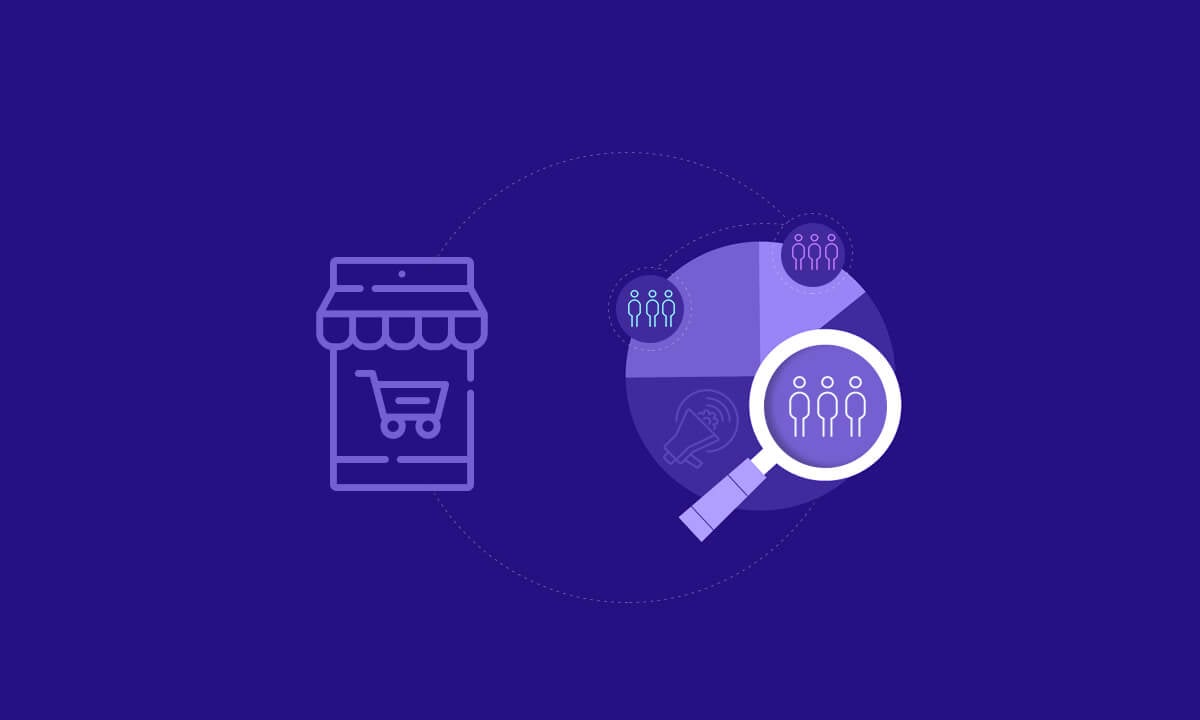Personalisation is a powerful tool – at least this is what brands can deduce from the fact that 74 percent of the customers expect personalized content on e-commerce websites. Incorporating ‘segmentation’ in your sales funnels can prove to be a formidable marketing strategy for your digital retail brand.
But, what is customer segmentation, and how can you use it effectively to uplift your sales? This blog will cover all possible 101s that your e-commerce brand should embrace to effectively use customer segmentation.
What is Customer Segmentation?
Customer segmentation is the core function for offering a personalized experience to your target audience based on – geography (location, weather, etc.), purchase behaviors (frequent buyers, discount shoppers, etc.), and their demography (age, gender, language, culture, etc.). Customer segmentation (or marketing segmentation) is a strategy to improve customer satisfaction via suitable messaging, value offering, and addressing specific needs.
In short, segmentation is a lens that allows you to identify the needs of different ‘categories’ or ‘sets’ of customers and deliver value to them accordingly.
If you’ve been treating all your customers with the ‘one size fits all’ approach, ponder again!
The Power of Customer Segmentation
Segmenting your customers as per available data and information can yield some serious ROI for your marketing initiatives. Take a look below to see what this strategy can do for your digital retail brand;
Get Better Returns on Sales Campaigns
If you encapsulate your offers to target everyone at once, chances are your returns will be diminished. Segmenting your audience and promoting them in a personalized manner can help you boost your sales conversion rate.
For instance, instead of promoting discounts to every customer on your list, target it to the ones who have made discounted purchases in the past. Similarly, run exclusive deals promotions only for those who have converted with such an offer in the past.
Discover New Market Opportunities
If you delve deeper into your customer segments, you’ll come across new problems that need to be solved. As an e-commerce brand, this can be your opportunity to tap into new markets and make the first move to gain a better edge.
For e.g., Canon researched their audience segments and came across a trend for low-end cameras. When they found out that their cheaper products were being purchased by amateur young photographers, they decided to launch a whole new range of low-end cameras for children. The initiative was obviously successful.
Better Customer Experience for Better Retention
A survey revealed that 80 percent of the customers are more likely to do repeat business with the brands that promise them a personalized experience. Dividing and viewing your audience in different sections will enable you to create tailored marketing communication, offers, and value for them. This will not just take your sales up a notch, but also keep your growing customer base stable.
Get More ‘Impulsive’ Sales
Depending on the degree of campaign personalization, e-commerce businesses can get more ‘impulse’ buys if everything is executed in order. Since personalized content for a given segment resonates more with the target user, they are more likely to make the purchase. In fact, more than 49 percent of the consumers admit to making impulsive & unplanned purchases after going through a personalized message.
For instance, a social media ad that says – “20% off on new arrivals, VIP members get 30% off” is more likely to be clicked by VIP membership holders for making the purchase.
What Can an E-commerce Brand Personalize for its Customers?
Once customer segmentations are created, different aspects of a campaign can be personalized to each segment based on the available data for that segment.
Some of the examples of personalization include;
- Greeting & sending exclusive deals to your customers on their birthdays
- Using the customer name in email subject line
- Product recommendations based on the customer’s previous browsing & purchase history
- Sending SMS/Texts with customer names to promote offers
What are the Ways to Create Audience Segmentation?
Now that you have absorbed the rationale behind using marketing segmentation, it is time to learn to implement it. Below are the 3 ways to create customer segments for your e-commerce brand;
Demographic Segmentation

Demographic factors mean the labels and information pertaining to customers as individuals. This includes age, gender, language, culture/community, and income as the deciding factors behind segmenting the audience. For instance, if a brand knows 65% of its audience to be women and 35% to be men, it can personalize its marketing to appeal to women, and do the same for men to churn better sales.
Personalized e-commerce marketing that arises out of demographic segmentation usually appeals to the ‘customer image’ and purchasing power. E.g. a premium online wristwatch selling brand might appeal to men & women’s style statement within personalized emails.
Geographic Segmentation

As common sense would suggest, categorizing your audience based on their location comprises geographic customer segmentation. Though, integrating it in your marketing campaigns will take more effort than just filtering out the countries, cities, and towns to target. You must know the geographic data of your customers to give them a better experience with your brand.
Ask yourself questions like;
- Which countries are my customers located in?
- What is the weather/climate like there?
- How do your customers start a typical day in that location?
- What is the time-zone difference between your operations base and the target city?
Such questions will reveal to you keen insights into personalizing the next marketing campaign. E.g. you can launch a tailored campaign for ‘winter sales, 20% off’ to your US customers, and ‘Dussehra sales blast’ to your Indian segment!
Online Behaviour/Psychographic Segmentation

This is by far the most effective segmentation technique simply because it appeals to the customer’s past actions, preferences, identity, values, and personalities. Creating a psychographic segment for your customers can help you optimize their online purchase journey through personalization, increase sales, and compel them to stay longer with your business.
An example of psychographic segment personalization can be an ad that appeals to new mothers – “Care for your newborn like nature intended to – 30% off on all-natural baby products this Mothers’ Day.” To make such a campaign successful, one needs to know the number of new mothers in their customers’ list besides their average past spending and product preferences.
A good thing is that the psychographic customer segmentation, personalization, and sales nudge can be achieved through automation. For instance, tools like Wigzo enable digital retail brands to create customer segments based on all the 3 factors and automate them to boost ROI. If a new customer comes to your website and you’ve created a ‘New Customers’ segment, Wigzo will trigger personalized communication, offers, and nudges as set by you in a fully automated manner.
Customer segmentation, especially when coupled with automation, can be a powerful strategy (without any extra overheads) for brands. It is one thing that will test your capability to deliver personalization at scale and be creative with your marketing campaigns. Besides yielding good ROI, it will also help you retain a larger number of customers for longer.
Got your mind working on creating audience segments for your next e-commerce marketing campaign? Stay tuned for our next blog on e-commerce growth!














